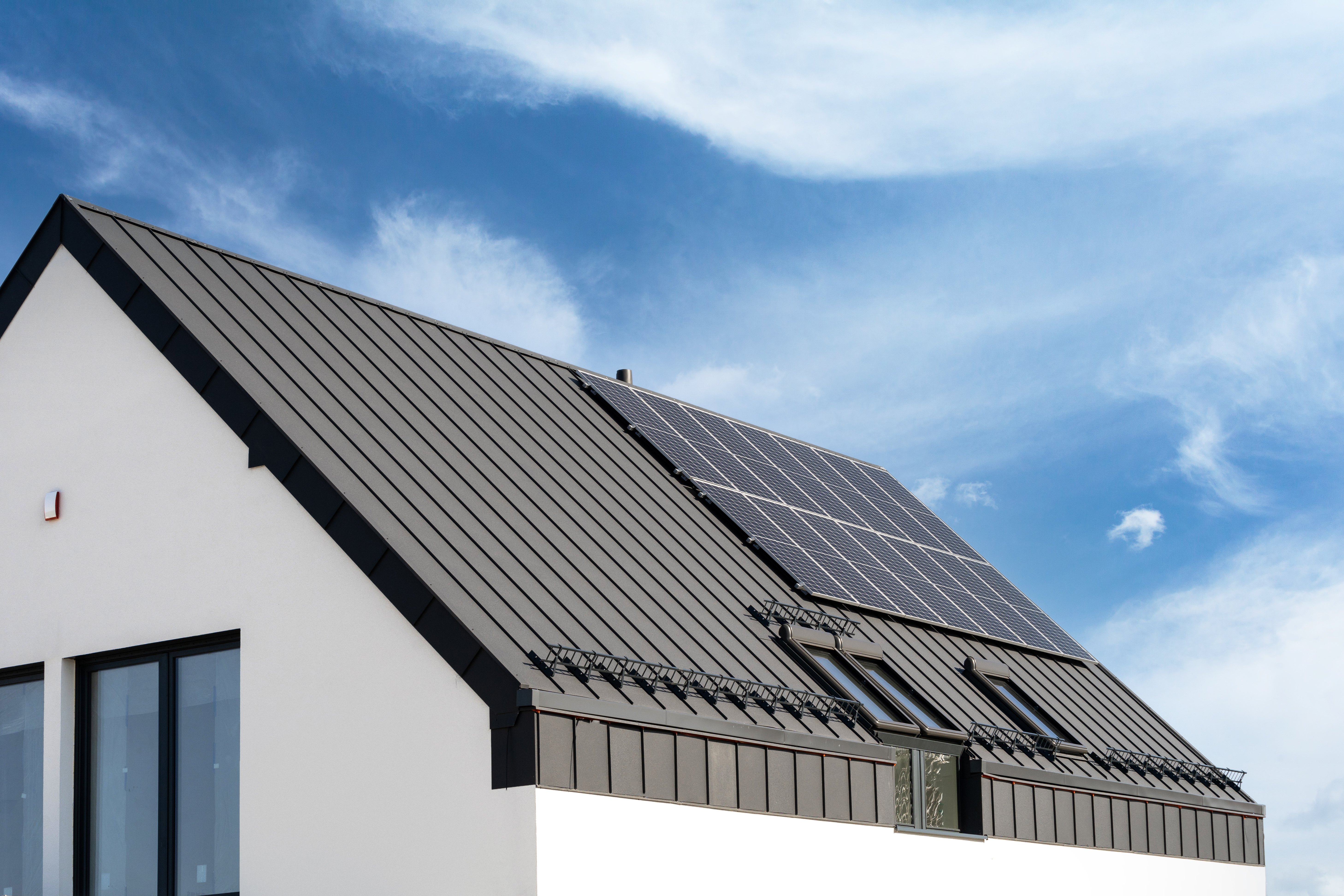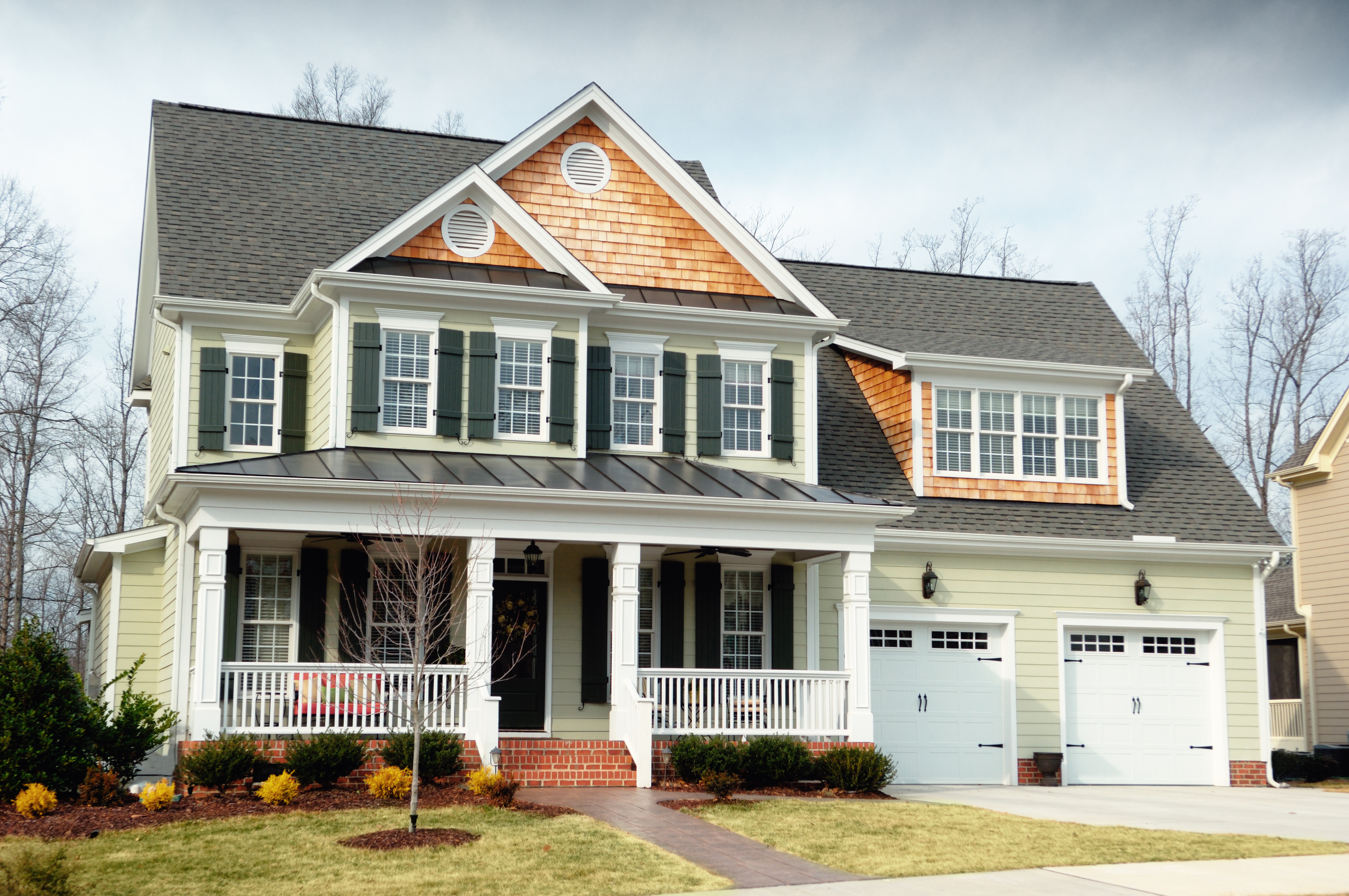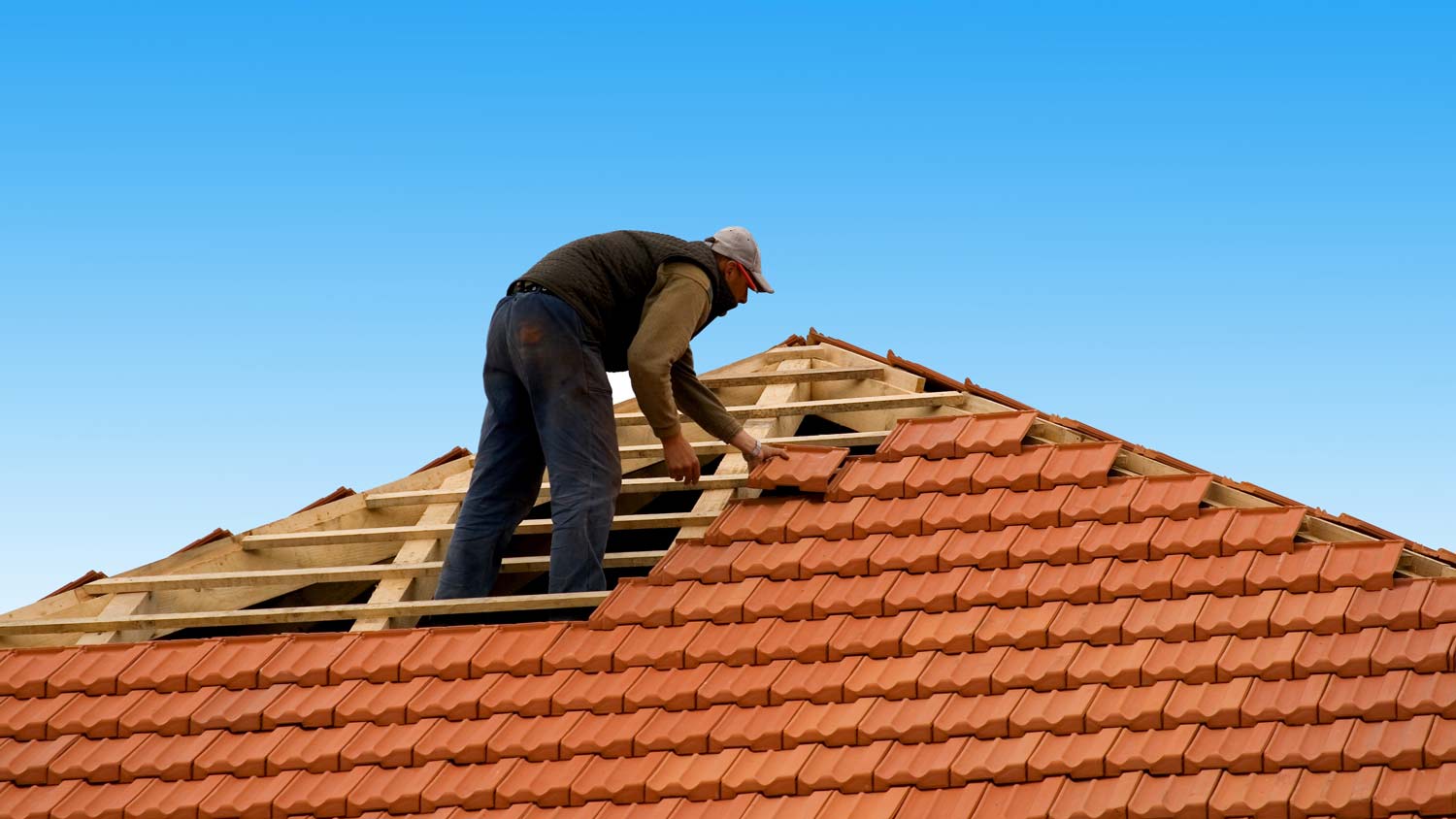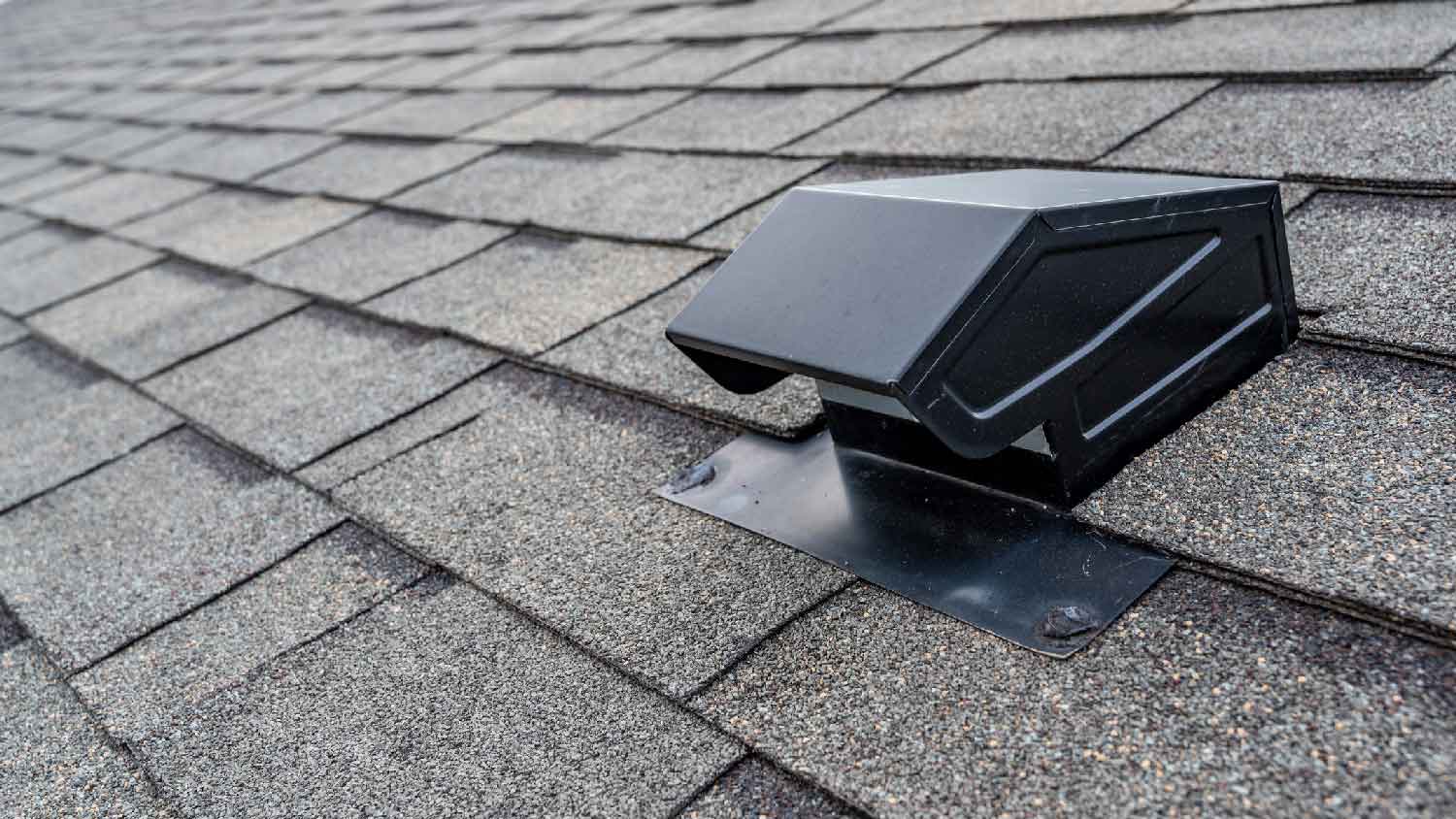
A metal roof can defend your home against Ohio’s varying weather conditions. Learn how much a metal roof costs in Columbus, OH.
The best roof color should balance with the hue of your home's siding and stonework


Whether you’re strolling up the front walkway or lounging in the backyard by the pool, the color of your roof plays a significant role in your home’s aesthetic. Set against the palette of your property, your roof’s color can create a bold, calming, or classic statement about your style. Explore these essential tips for choosing the best roof color when building a new home or painting your roof.
If you live in an area under the authority of the local homeowner’s association (HOA), you know that you require authorization for many custom features of your house. The color of your roof is no exception.
Before you break out the swatches or shingle options, consult your HOA’s covenants, conditions, and restrictions (CC&Rs) on home colors. One of the most significant reasons these policies exist is the protection of home values in the neighborhood. Painting your roof gold may fit your aesthetic, but it may not do you any favors with realtors down the line.
You may have to submit a formal proposal to your HOA before changing the color of your roof. It would be beneficial to consult with your property management company in the event that there were changes to your CC&R that you may not have seen. There might even be a list of pre-approved colors or materials for your roof.
Let's begin with your primary roof color options. While it may be tempting to make a bold statement with bright yellow or pastel pink, shingles typically reflect natural hues, and for good reason.
Much like your home's siding, a roof should complement the tones around your yard and under natural sunlight. Modern roof shingle colors borrow from traditional roof materials like wood, slate, and clay. You'll find sturdier and more resilient materials today, such as asphalt, steel, and concrete, but the upgraded original favorites remain as well.

Just like paint, you'll find endless variations within each category. Terracotta shingles, for example, combine red and brown hues. And when blue makes it on the scene, it often mixes with gray to pair with a cool home siding color. Gray itself scales from slate to silver, so you'll have your pick of hues when the time comes.
How much of your roof can you see from the front, side, and back of the house? The angle of your roof's slant determines how it balances with the rest of your home. Steep roofs show off a lot of shingles, significantly altering a home’s color scheme. A more gradual slope that is hard to see from the road means the tint plays less of a role.
If you can see a large part of your roof due to a steep slant, steer away from dark, rich colors, especially if your siding is a cool or pale color. This can make it look like your roof is overwhelming the bottom half of your house, throwing off the general balance.

Here's where the big decision comes in. Picking a roof color typically comes down to the tint of your home's siding.
Stonework—like walkways, walls, and patios—should always play a role if they take up significant space. You should be able to look from the ground to the eaves and see one cohesive look.
As a general rule of thumb, try to pair cool tones with cool tones and warm with warm. You can still find plenty of bold contrast when following this guideline, but it does help you avoid clashing colors.
Let's look at the color of your home's siding and complementary roof colors:
| House Color | Roof Colors |
|---|---|
| White | Brown, black, gray, red, blue |
| Red Brick | Tan, black, gray, blueish-gray |
| Gray | Brown or sand for a warm-tone gray; black, gray, or slate for a cool-tone gray |
| Blue | Slate gray, pale gray, gray-blue, black |
| Yellow | Gray, black, tan, slate blue |
| Cream | Gray, blue, tan, sand, brown |
In the old days, you wouldn't see a lot of darker roofs in warmer climates. However, with the rise of improved ventilation, insulation, and advanced shingle materials, the roof color no longer has as much of an effect on your home's heat as it used to. Now, the anatomy of your roof plays a more significant role in energy efficiency.
The US Department of Energy outlines several choices of unique eco-friendly roof materials. While the color of your roof plays a small role, the slope and materials used in constructing a new roof are crucial. It’s also vital to understand the parts of a roof so you can know what to look for when evaluating your roof’s energy efficiency.
Outside of your local climate's temperature, keep the hue of your sunlight and local materials in mind as well. For example, you'll encounter more reddish and tan stonework in the southwest than you will on the Eastern Seaboard. Be sure to view your potential shingle colors out in the sunlight instead of the store.
Choose hues for your home—including on your roof—that complement the colors of your surrounding landscape. For example, a New England home is more likely to match the cool tones of the seasons, while Southern California homes see an abundance of terracotta to match the foliage.
Consider factors like the cost and availability of shingles near your area or whether you plan to paint your roof. The color of your shingles and paint won't likely sway the price significantly, but your selection of roof materials will. So, you should choose the best types of roofing materials for your home and your needs.
Painting an already existing roof and installing a brand new roof both come with their own sets of challenges to take on. Do your best to plan for factors such as the type of tools you’ll require or the roof replacement cost. By doing so, you can avoid any unwanted surprises while giving yourself the means to smooth out any potential rough spots in your project.
Picking your perfect roof color requires knowing how the color will look on your home. Unfortunately, it’s a logistical nightmare to attempt to test out an entire roof, then change your mind and swap it out for something new. Instead, your best option is to acquire samples to test around your home.
You can contact roofing suppliers and manufacturers for samples in the form of swatches or small shingles in the color of the final product. Once you have them, here are some tips for testing them around your home’s exterior:
Test your samples in both natural lighting during the day and artificial lighting at nighttime. The natural light will give you the most accurate idea of how the color will look on your roof, but some colors shift in different lighting.
Be sure to view your sample from different angles around the property, including the street view. Doing so will allow you to see how the color looks from various perspectives.
Consider how the sample looks when compared with the various materials in your home’s construction. The color of your brickwork, siding, windows, and landscaping can all complement or contrast your prospective roof color.
You can use digital visualization tools that allow you to upload a photo of your house and change the color of the roof virtually. Be aware that you will be viewing these colors through a digital lens, so they may not accurately represent the final product.
Most importantly, you can work with local roofers near you who can walk you through the testing and decision-making process with ease. They've seen it all—from bold choices to high-style designs—so lean on their professional knowledge whenever in doubt.
It’s important to choose a shingle color that complements the style of your home. However, it should also contrast its exterior elements to give your property a fresh, attractive look. Whether you have a Colonial, Victorian, Plantation, Queen Anne, or any other style home, make sure to find a complimentary roof color for it.
If you have a Contemporary style home, a neutral tone, such as brown, tan, or warm gray, is likely your best bet. However, if your home gives off a Rustic vibe, an earthy color, such as brown or green may be a good option. A Cape Cod property, which usually has light siding would be better off with a light color in a cool tone, such as gray.
Regardless of what style of home you live in, your goal should be to choose a roof color that looks great with its exterior aesthetic. Ideally, you’d stay away from a roof the same color as the rest of your property.
Nick Crawford contributed to this piece.
From average costs to expert advice, get all the answers you need to get your job done.

A metal roof can defend your home against Ohio’s varying weather conditions. Learn how much a metal roof costs in Columbus, OH.

Learn about roof replacement costs in Columbus and what factors are at play to budget accurately and make sure you’re getting a fair price.

Dealing with a visibly damaged roof or leak? Learn about roof repair costs in Columbus to see how much you’ll need to budget for a permanent solution.

Find out the average tile roof repair cost, key price factors, and ways to save. Get expert tips to plan your tile roof repair project with confidence.

Do roof vents work? Is roof ventilation necessary? Can I have too much ventilation? Here are the top 11 myths about roof vents and the real answers you deserve.

This guide lays out the cost to install a roof vent on your home depending on the type of ventilation that's best for your roof based on several factors.